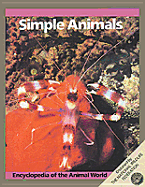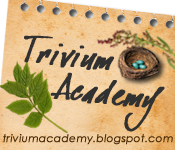Spines:
1. Animal: The Definitive Visual Guide to the World's Wildlife
2. Any non-fiction book that focuses on invertebrates, for this we have two books:

Encyclopedia of the Animal World: Simple Animals 0-8160-1968-1
Encyclopedia of the Animal World: Insects and Spiders 0-8160-1967-3
both are out of print
Encyclopedia of the Animal World: Insects and Spiders 0-8160-1967-3
both are out of print
Living Books
The Burgess Seashore Book for Children (Dover Storybooks for Children)
Insect Folk by Margaret Morley (OOP, free text-linked to Gutenberg)
Children of Summer: Henri Fabre's Insects by Margaret Anderson (OOP)
The Cheerful Cricket and Others by Jeanette Marks (OOP, free text-linked to Gutenberg)
All other books mentioned are the books we own, they are not recommendations for the best book on the topic.
Activity Books:
Giant Science Resource Book: Grades 1-6
The 100+ Series Life Science Grades 5-8
All other books mentioned are the books we own, they are not recommendations for the best book on the topic.
Projects:
Consider what living experiments or dissections may be appropriate during the study. Order ahead to ensure timely delivery.
From HomeScienceTools.com:We also intend to go beachcombing and explore what we're learning in our environment.
Pocket Microscope 100x
Elementary Slide Set
From Carolina Biological Supply:
exclusively from Carolina
Life in a Rotting Log Kit, $34.25
Young Scientist's Starfish Dissection Kit, $6.95
Free helps for projects:
Build A Wormery
Build Your Own Ant Farm
~~~~~~~~~~~~~~~~~~~~~~~~~~~~~~~~~~~~~~~~~~~~~~~~~~~~~
Week 1 Introduction to Invertebrates
Teaching Focus
A. Explain differences between vertebrates/invertebrates
Group of animals that have no backbone, jaws, or bony skeletonB. Overview of invertebrate classification1. Hydrostatic skeleton, hard plates, spicule skeleton, shells
Hydrostatic: water-filled balloon
C. Define bilateral and radial symmetry
D. Metamorphosis
E. Herbivores and Carnivores
- In water invertebrates filter feed
- On land, invertebrates forage for food
Books
DK Animal, pg. 524-527
Simple Animals by Stidworthy, pg. 6-9
Benny's Animals and How He Sorted Them by Selsam (Independent)
Bugs by Nancy Winslow Parker, pg. 38
Experiments/Activities
Giant Science: Ocean Invertebrates, Sorting Cards, Land Invertebrates
The 100+ Series Life Science (Grades 5-8) by Daryl Vriesenga
- pg. 43, Backbone or No Backbone
- pg. 76 Metamorphosis
- pg. 36 Symmetrical Critters
United Streaming
Animals Around Us: Invertebrates, What Are They?
Animals Without Backbones: The Invertebrate Story
Week 2 Sponges (Porifera)
Teaching Focus
A. Immobile (sessile), attached to solid surfaces
B. Filter feeds & excretes
C. Most are marine, few are freshwater
D. Illustrate the anatomy of a sponge
Experiments/Projects/Activities
EnchantedLearning.com Sponge Anatomy or
The 100+ Series Life Science (Grades 5-8) by Daryl Vriesenga
- pg. 79 Label the Sponge
Books
Secrets of the Animal World: Sponges, Filters of the Sea
Simple Animals pg. 14-15
DK Animal pg 528
United Streaming
Porifera
Suggested approach for the week:
Day 1- Do overview of DK Animal, Read Simple Animals
Day 2- Read Secrets of the Animal World: Sponges, work on worksheet
Day 3- Finish Day 2 focus and watch Porifera
Week 3 Cnidarians (Sea Anemones, Corals, Jellyfish)
Teaching Focus
A. Symmetrical body
B. Tentacles around mouth, stinging cells (cnidocytes)
C. Most marine, few freshwater
D. Polyps, Medusae (venn diagram comparisons)
E. Carnivores
Experiment/Project:
Giant Science; Cnidarians
Books
Secrets of the Animal World: Jellyfish, Animals with a Deadly Touch
Simple Animals pg. 16-23
DK Animal pg 529-532
A Jellyfish is not a Fish by Waters
Coral Reef Hideaway by Boyle
Burgess Seashore Book:
The Queer Jelly, pg. 123, R.F. sees Queer Garden, pg. 129
United Streaming
Animal Life in a Tidepool
Animals Around Us: Invertebrates: What are they?
Suggested approach for the week:
Day 1- Do overview of DK Animal, Read Simple Animals, do worksheets
Day 2- Read half of Secrets of the Animal World: Jellyfish, A Jellyfish is not a Fish (Ind.), BSB: Queer Jelly
Day 3- Read 2nd half of Secrets of the Animal World: Jellyfish, Coral Reef Hideaway (Ind.), BSB: Queer Garden
Day 4- United Streaming
Week 4
Flatworms (Platyhelminthes)
Teaching Focus
A. Bilateral symmetry
Segmented Worms (Annelids)
Teaching Focus
A. Divided into a series of linked by partly independent sections,
each section has independent organs
B. Burrowers
Roundworms (Nematodes)
Teaching Focus
A. Free living or parasitic
Experiment/Project:
Comparison worksheet: Sponge, Cnidarian, Flatworm, Roundworm
Segmented Worms worksheet
Books
What's Eating You? Parasites
Simple Animals pg. 24-29, 34-35
DK Animal pg 533-535
Life in a Bucket of Soil pg 23-35: Earthworms and Roundworms
Wiggling Worms at Work
United Streaming
Animals without Backbones: The Invertebrate Story
Animals Around Us: Invertebrates: What are they?
Week 5-6 Mollusks
Teaching Focus
A. Includes gastropods, bivalves, cephalopods, chitons and less familar mollusks.
- Oysters, clams, mussels, snails, slugs, octopus, squid
- Horny, toothed ribbon in mouth (radula)
- Calcium-carbonate shell
- Mantle or mantle cavity with gill
- Live on land, water or parasite
Experiment/Project:
Giant Science: What is a Snail?, Mollusks (w/one, two, no) shell(s)
100+ Series Life Science: pg. 77, Clams
Books
Simple Animals pg. 60-75
DK Animal pg 538-544
Life in a Bucket of Soil: Snails & Slugs pg. 36
Biography of an Octopus by Hopf
Burgess Seashore Book: Collars of Sand, pg. 92, Clams 31,37, 170-177, Squid pgs. 158-164
United Streaming
Oceans Alive: Mollusks
Science of the Sea: Marine Marvels
Week 7 Echinoderms
Teaching Focus
A. Marine invertebrates: starfish, brittlestars, sea urchins, sea cucumbers
B. Typically spiny and divided into 5 equal parts arranged symmetrically around a central point
C. Skeleton made of calcium-carbonate plates
D. Unique water-vascular system
E. Mobile, bottom-dwelling
Experiment/Project:
Giant Science: Echinoderms
Glencoe: How do Echinoderms Move? worksheet
Dissect Starfish
Books
One Small Place by the Sea by Brenner (Ind.)
Simple Animals pg. 76-85
DK Animal pg 529-532
Starfish by Edith Thatcher Hurd (Ind.)
Burgess Seashore Book: 72-78, 99, 135
United Streaming
Echinoderms
Animals Around Us: Invertebrates: What Are They?
Week 8-12 Arthropods
Teaching Focus
A. Largest phylum
B. Exoskeleton covering a segmented body w/jointed legs in pairs
C. Only invertebrates capable of powered flight
D. Essential to world's ecosystems
Weeks 8-10
Teaching Focus
I. Mandibulates
The Mandibulata distinguishes those arthropods, such as insects and crustaceans, that posses biting jaws (mandibles), from the chelicerates which developed pincers instead (e.g. spiders). Specifically, the mandibles of the mandibulates are derived from the legs of the third or fourth segment. In addition, all mandibulates have groups of eight cells in the retinula of the compound eye, if one exists. They may be uniramous or biramous (one or two pairs of legs per segment), one or two pairs of antennae, and two or three main body segments.
A. Hexapods- a consolidated thorax with three pairs of legs
1. Insectsa. 3 pairs of legsBristletails
b. wings, powered flight
c. ecosystems are highly dependent
d. segmented body: head, thorax, abdomen
e. simple eyes (ocelli) and compound eyes
f. Life cycles: Ametabolous development, Incomplete Metamorphosis, Complete Metamorphosis
Silverfish
Mayflies
Damselflies and Dragonflies
Bugs by Nancy Winslow Parker
Crickets & Grasshoppers
Bugs by Nancy Winslow Parker
Stoneflies
Rock Crawlers
Stick and Leaf Insects
Earwigs
Mantids
Cockroaches
Bugs by Nancy Winslow Parker
Termites
Bugs by Nancy Winslow Parker
Web-Spinners
Angel Insects
Barklice and Booklice
Parasitic Lice
Bugs by Nancy Winslow Parker
Bugs
Thrips
Dobsonflies and Alderflies
Snakeflies
Antlions, Lacewings and Relatives
Beetles
I like Beetles by Conklin
Stresipterans
Scorpionflies
Fleas
Bugs by Nancy Winslow Parker
Flies & Mosquitoes
Bugs by Nancy Winslow Parker
Caddisflies
Moths and Butterflies
Bugs by Nancy Winslow Parker
Know it all Butterflies
How to Hide a Butterfly by Heller
Bees, Wasps, Ants, and Sawflies
Bugs by Nancy Winslow Parker
Honeybees
Honey in a Hive
How Bees Make Honey
The World of Ants
Ant Cities
Amazing World of Ants
B. Myriapods
Centipedes and Millipedes
Books
Insect Folk by Margaret Morley (190 pgs.)
- covers most of the insects above
Children of Summer by M. Anderson (92 pgs.)
- fictional account of Jean Henri Fabre's children
The Cheerful Cricket and Others by Jeannette Marks (75 pgs.)
- short, informative reads on variety of insects (Ind)
Encyclopedia of Animals: Insects & Spiders
An Insect's Body by Joanna Cole
Life in a Bucket of Soil- covers Bristletails, Mites, Bees, Ants, Centipedes, Woodlice
Experiments/Projects
100+ Life Science:
- pg. 62 Classes or arthropods
- pg. 72-73 Grasshopper
- pg. 74-75 Moths and Butterflies
Giant Science: Various
United Streaming
Junior Zoologist: Insects
The Incredible World of Insects
Exploring the Diversity of Life: Insect Diversity
Magic School Bus Gets Ants in Its Pants, The
Butterflies and Bees
Bees and How They Live
Magic School Bus in a Beehive, The
Week 11
C. Crustaceans
Branchiopods
Copepods & Barnacles
MalacostracansShrimp, Crayfish and Prawn
Crabs
Lobsters
Woodlice, Beach Hoppers
Books
Burgess Seashore Book for Children pgs- 17, 25, 48-65, 152-157, 190-196
Simple Animals pg. 36-59
DK Animal
Life a Bucket of Soil, Woodlice
United Streaming
Seahouse: Crabs, Lobsters, and Shrimp
Animals without Backbones: The Invertebrate Story
Ocean Habitats: Shoreline and Reef
Week 12
II. Chelicerates
A. Sea-Spiders
Burgess Seashore Book: pg. 135
B. Horseshoe Crabs
Burgess Seashore Book 105-110
Horseshoe Crab by R. McClung
C. Arachnids
Scorpions
Ticks and Mites
Bugs by Nancy Winslow Parker
Spiders & Tarantulas
Secrets of the Animal World: Spiders, The Great Spinners
Wolfie by Janet Chenery
Books
Insects & Spiders
DK Animal
Life a Bucket of Soil, Spiders
United Streaming
The Incredible World of Spiders
Magic School Bus Spins a Web, The
The Life of a Forest: A Forest Grows Old




























2 comments:
Wow! What a great plan. Looks like you've been doing a LOT of work. :-)
Thank you for sharing your lesson plan. I had been wondering how to ask you to share your science curriculum, so a big thank you!
Post a Comment